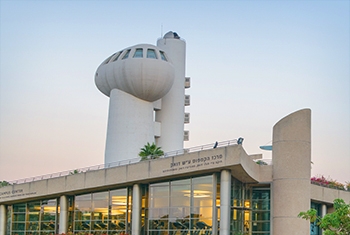The André Deloro Institute for Space and Optics Research supports the investigation of everything from the explosion of supernovae in distant galaxies, to the escape of electrons from the atomic nucleus. The advanced imaging technologies developed and used by the Institute's scientists are shedding new light on phenomena occurring at both ends of the spectrum.
Faculty members at the André Deloro Institute have developed new algorithms that make it possible to identify and characterize supernovae that were not caught on camera, by comparing images of the night sky taken before and after the explosion occurred. They are currently investigating whether the same algorithms can be used in medicine, for the early detection of tissue changes that can mark the onset of melanoma and other diseases. In another project, which is being considered for commercial development, they have developed a way to combine multiple images, collected from many different locations, onto one small detector, making it possible to survey more of the sky, more effectively.
The André Deloro Institute for Advanced Research in Space and Optics helps provide a solid financial basis for advanced research in this exciting field, enabling the Weizmann Institute to expand its recruitment of bright and talented young experts in astrophysics and optics.


